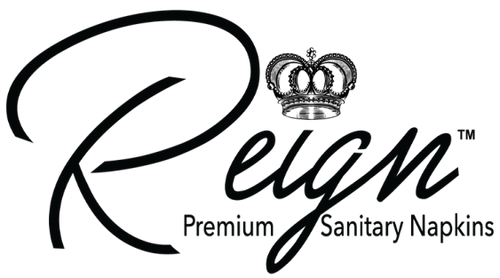Introduction
Women’s health is a symphony of interconnected systems — the menstrual cycle, hormone levels, and breast tissue are all guided by a delicate hormonal rhythm. Understanding this connection can help women recognize early signs of hormonal imbalance, prevent discomfort like breast pain, and even lower long-term breast cancer risks.
Our bodies constantly respond to hormonal changes throughout the menstrual phases, and the choices we make — from diet to the type of cotton pads we use — can influence overall reproductive health and hormonal health.
The Hormonal Bridge Between Your Cycle and Breasts
During each menstrual cycle, several key hormones — including estrogen, progesterone, and growth hormone — fluctuate to prepare your body for ovulation. These hormonal fluctuations also affect your breast tissue, leading to sensations like breast tenderness, swelling, or fullness.
In the first half of your cycle, estrogen levels rise, stimulating breast duct growth. After ovulation, progesterone takes over, causing temporary cyclic breast pain (also called Cyclical Mastalgia) for some women. This is why many experience cyclic breast tenderness right before their period.
However, when hormone levels become unbalanced — due to chronic stress, poor sleep, or synthetic exposure from hormonal contraceptives — it can lead to persistent noncyclic breast tenderness, mood changes, or even fibrocystic breasts.
The Role of Hormonal Balance in Breast and Reproductive Health
Balanced hormonal levels are essential for both breast volume regulation and reproductive health. When estrogen dominance or insulin resistance occurs, it may lead to weight gain, irregular periods, or even influence Benign Disorders and Diseases of the Breast.
Supporting natural hormone balance involves caring for the adrenal glands, thyroid hormones, and Cortisol levels, since these regulate how your body manages stress and produces female hormones.
Toxins, Pads, and Hormone Health
Traditional pads and tampons can introduce adverse effects on hormone function. Many contain chemicals linked to estrogen metabolism disruption, potentially altering vaginal estrogen balance and contributing to hormone imbalance or hormone imbalances over time.
By switching to breathable cotton pads, you reduce exposure to these toxins. This choice supports the body’s natural detoxification process and helps maintain healthy estrogen levels.
For younger users, starting early with gentle, toxin-free teen pads can protect their developing hormonal health during puberty — a crucial stage when hormonal changes are frequent.
Hormonal Health and Breast Cancer Awareness
Fluctuating hormone levels are part of every woman’s life, but persistent imbalance can increase the risk of certain health conditions such as breast cancer and endometrial cancer. These conditions can also be influenced by long-term hormonal contraception, hormone replacement therapy, or oral contraceptive pills.
Maintaining hormone health naturally through nutrition, stress management, and non-toxic menstrual care reduces exposure to unnecessary hormonal contraceptive use and chemicals that may heighten cardiovascular risks or disrupt hormone function.
Natural Ways to Support Hormone Balance
Here are several lifestyle practices that support your hormonal balance and breast health:
- Eat clean, plant-rich foods. Limit animal products high in hormones and choose organic produce that supports estrogen metabolism.
- Move your body. Exercise improves glucose levels, reduces insulin resistance, and helps balance stress hormones.
- Use safe menstrual care. Cotton pads allow airflow and reduce exposure to irritants linked to hormonal fluctuations.
- Manage stress. Balanced Cortisol levels protect the adrenal glands and prevent hormone imbalance from chronic stress.
- Sleep deeply. Rest restores hormone function and reduces risk of polycystic ovary syndrome (PCOS).
- Avoid synthetic exposure. Minimize use of products that contain parabens, BPA, or dioxins — all known endocrine disruptors.
Even something as simple as switching to breathable cotton pads or teen pads helps your body’s natural rhythm — improving both comfort and hormone balance over time.
Breast Care and Early Detection
Understanding your hormones also empowers you to detect early signs of change. If you experience persistent Breast Pain see your primary care doctor. Recognizing normal hormone fluctuations versus ongoing discomfort can help rule out cystic breasts and reduce fear around natural cyclic breast pain.
Holistic Connection: Mind, Hormones, and Health
Everything in your body is connected. When hormonal health is balanced, your reproductive system, breast tissue, and mood all flow in harmony. But when disrupted — whether from psychotropic drug use, information avoidance, or unmanaged stress — your body’s signals may manifest as irregular periods, breast tenderness, or hormone imbalance.
Awareness is your first line of defense. Pair your menstrual cycle tracking with monthly breast self-exams. Avoid synthetic hormonal contraceptives unless medically necessary and consult your doctor before considering hormone therapy or hormone replacement therapy.
Holistic health isn’t just about treatment — it’s about understanding the natural language of your body and responding with compassion.
Final Thoughts
Your hormonal health is powerful, sensitive, and worth protecting. Every choice — the food you eat, how you manage chronic stress, the products you wear, and the care you give your breasts — shapes your wellbeing.
Choosing cotton pads and teen pads, staying active, and supporting your natural hormone balance can prevent discomforts like cyclic breast tenderness and promote a lifetime of stronger reproductive health.
Your body speaks through patterns: your menstrual cycle, your mood, and even your breast pain. Listen to those messages, honor your rhythm, and let self-care become your daily act of prevention. 🌸

